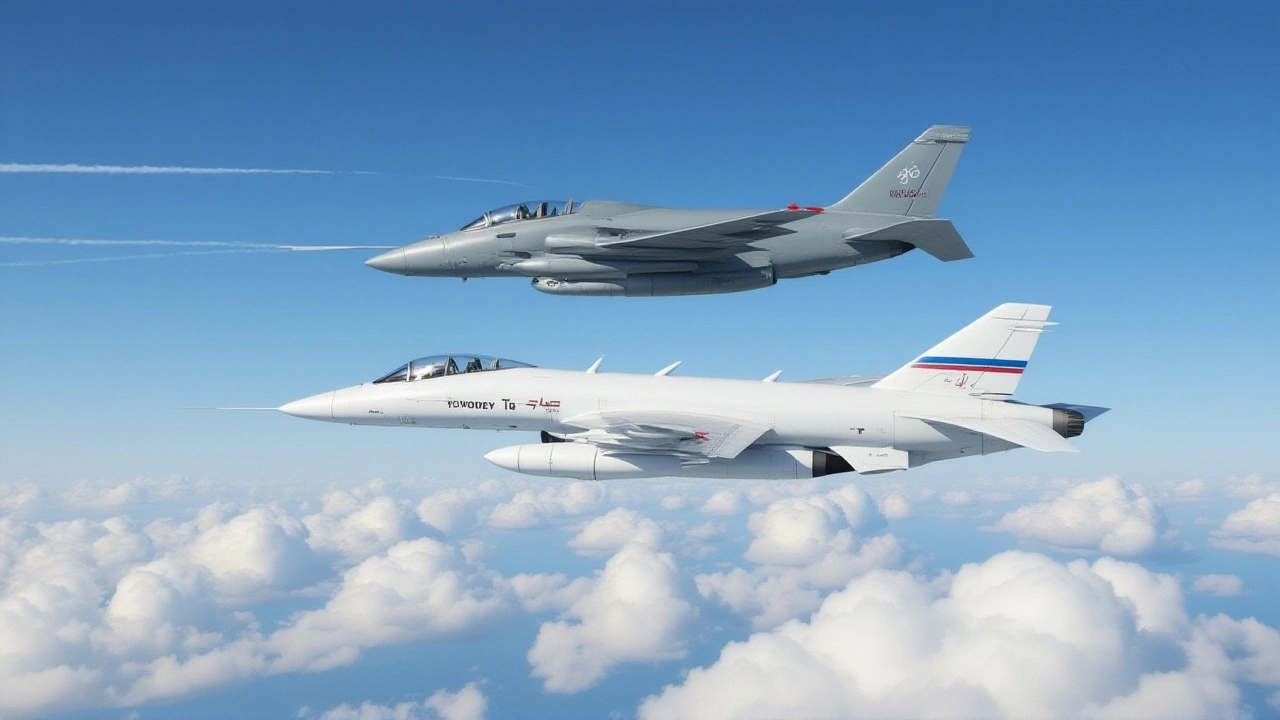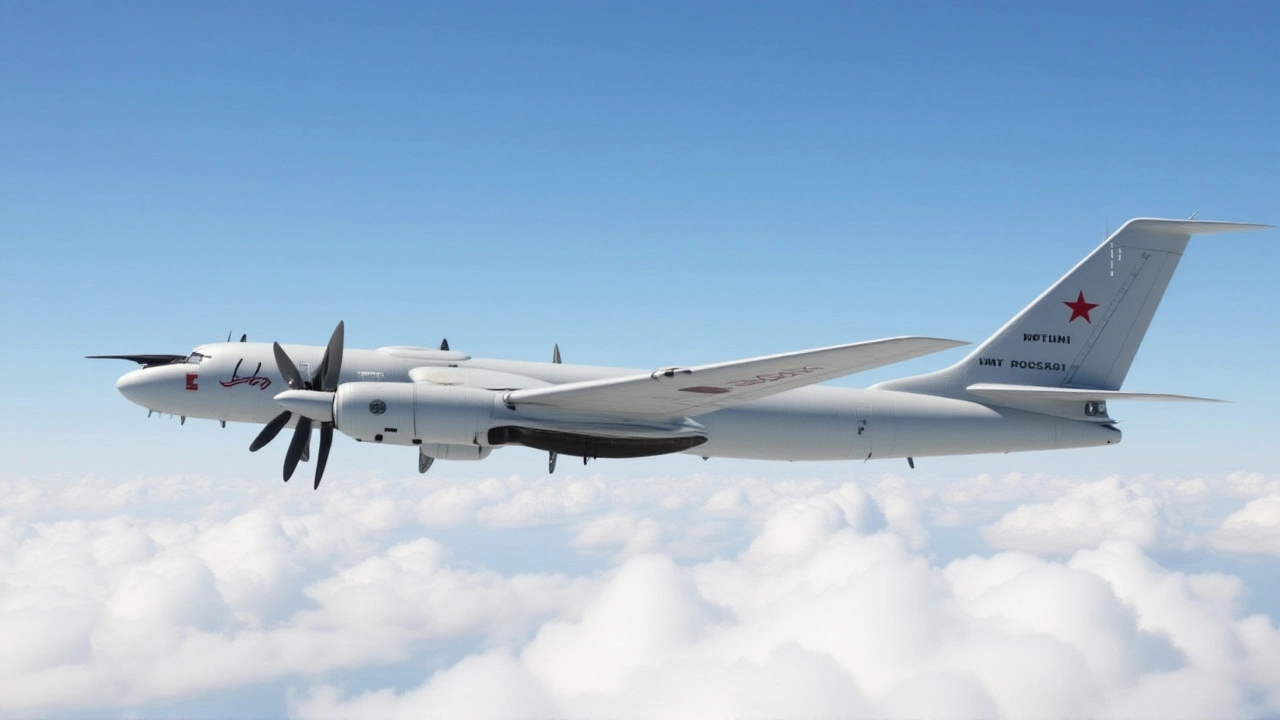When British Royal Air Force pilots from No. II Squadron stationed at Malbork Air Base in Poland took to the skies six times in as many days, the stakes were instantly clear: NATO’s Baltic airspace was under pressure from a spate of Russian reconnaissance flights.
From 7 June to 13 June 2025, the Eurofighter Quick Reaction Alert (QRA) crews intercepted a mixed bag of Antonov An‑30 “CLANK” photo‑recon aircraft, Ilyushin Il‑20M “COOT‑A” ELINT platforms and Sukhoi Su‑24M “FENCER‑D” tactical bombers that were rattling the nerves of NATO’s Combined Air Operations Centre. The drama unfolded just outside the Kaliningrad Flight Information Region (FIR) and over the wider Baltic Sea region, a theatre that has become a testing ground for Moscow’s aerial probing.
Why the Baltic Has Become a Flashpoint
Since the annexation of Crimea in 2014, the Russian Ministry of Defence has steadily increased the tempo of flights near NATO borders. NATO responded in 2022 with an enhanced air‑policing framework that places QRA assets on standby 24‑hours a day in member states bordering the Baltic enclave. The idea is simple: any aircraft that fails to file a flight plan or ignores civilian ATC frequencies is met with a rapid interceptor, a practice that mirrors Cold‑War “show‑of‑force” tactics but with modern, network‑centric sensors.
Poland’s strategic location makes it the first line of defence. The RAF’s deployment of two Typhoon FGR4 squadrons to Malbork in early 2025 was part of the United Kingdom’s commitment to the alliance’s “forward‑presence” policy, ensuring that allied fighters are already in the pocket when a scramble is ordered.
Day‑by‑Day Breakdown of the Intercepts
7 June 2025 – Dual‑track interception: At 09:12 GMT, radar operators at the NATO CAOC picked up an AN‑30 departing the Kaliningrad FIR. Within minutes, two RAF Typhoons lifted off, identified the aircraft as a “CLANK”, then received an immediate retask to shadow an Il‑20M that was converging on the same sector. Pilots reported a “tight coordination loop” between ground controllers and the airborne crew, highlighting the flexibility of the QRA system.
8 June 2025 – Su‑24M fly‑by drama: The next morning, two unidentified contacts were detected heading westward. Visual identification confirmed a pair of Su‑24M “FENCER‑D” bombers. Instead of turning away, one of the bombers swooped low—under 500 ft—over the USNS William McLean, a U.S. Navy dry‑cargo ship transiting international waters. The manoeuvre was labeled “provocative” by analysts, and the RAF Typhoons maintained visual contact for the full 30‑minute window, escorting the bombers out of the Baltic airspace.
13 June 2025 – Il‑20M breach: At 10:50 local time, an Il‑20M crossed the Polish‑Lithuanian border without filing a plan. Two Typhoons scrambled within three minutes, intercepted the aircraft at 22,000 ft, and escorted it back toward Russian airspace. The RAF spokesperson noted that the Il‑20M, despite its vintage airframe, carries sophisticated signals‑intelligence suites capable of mapping NATO radar fingerprints.
These three days accounted for six separate scrambles, each involving a pair of Typhoons, and they illustrate how quickly the situation can shift from routine monitoring to high‑tension brinkmanship.
Technical Edge: What Makes the Typhoon a Suitable QRA Platform?
- Twin EJ200 turbofans delivering thrust that pushes the aircraft past Mach 2.0.
- Captor‑M AESA radar and PIRATE IRST providing 360‑degree situational awareness.
- Defensive Aids Sub‑System (DASS) that automatically detects missile threats.
- Armament options ranging from AIM‑120 AMRAAM beyond‑visual‑range missiles to Brimstone 2 anti‑armor weapons.
- Combat radius of roughly 1,390 km, allowing sustained patrols over the Baltic without mid‑mission refuelling.
The blend of speed, sensor fusion and weapons flexibility lets the RAF respond to anything from slow‑moving ELINT platforms to fast‑acting tactical bombers. In practice, pilots say the aircraft’s “plug‑and‑play” cockpit layout shortens decision cycles—a crucial factor when a scramble order lands on the runway at 02:00 hrs.
Reactions From the Players
Air Chief Marshal Sir Mike Gartner, head of the RAF’s Air Command, told reporters that the operations “demonstrate the professionalism and readiness of our expeditionary wing.” He added that each intercept is logged to fine‑tune NATO’s response timelines.
From the Russian side, a spokesperson for the Russian Aerospace Forces dismissed the incidents as “routine patrols” and accused NATO of “escalating tensions with unnecessary military posturing.”
Western defence analysts are more circumspect. Dr Lena Markova, senior fellow at the European Security Forum, noted that while the aircraft themselves are not cutting‑edge, their deployment signals a “strategic temperature check” by Moscow, probing how quickly NATO can react and what data it can harvest from the encounters.
What This Means for NATO’s Baltic Air Policing
The pattern of unscheduled Russian flights is expected to continue through the summer, especially as Moscow tests new electronic‑warfare payloads on aging platforms. NATO’s current rule of engagement still treats weapon release as a last resort; instead, the focus remains on identification, escort and de‑confliction.
Experts warn that repeated low‑altitude fly‑bys, like the one over USNS William McLean, could be a prelude to more aggressive tactics, such as electronic jamming or even simulated attack runs. The RAF’s continued presence in Poland, paired with allied assets from the Netherlands and the United States, creates a multi‑layered shield that NATO hopes will deter any escalation.
Looking Ahead: Possible Scenarios
In the coming months, three outcomes seem most likely:
- A diplomatic protest chain that forces Russia to file proper flight plans, reducing the frequency of QRA scrambles.
- An escalation where Russian aircraft adopt more aggressive postures, prompting NATO to consider armed interception under limited‑circumstance rules.
- A technological arms race, with Russia retrofitting older platforms with stealth‑enhancing kits and NATO countering with upgraded radar and data‑fusion capabilities.
Regardless of the path, the June 2025 intercepts have already underscored how quickly a routine patrol can become a flashpoint in the geopolitics of the Baltic. As the season warms, both sides will be watching the skies—and each other’s next move—more closely than ever.

Frequently Asked Questions
How do these intercepts affect NATO’s relationship with Russia?
Each interception reinforces NATO’s commitment to collective defence, but it also deepens mistrust. Moscow views the scrambles as provocative, while allies argue they are necessary to uphold air‑space sovereignty. The tension is likely to spur diplomatic talks aimed at establishing clearer flight‑plan protocols, yet the underlying strategic rivalry remains unchanged.
What technical advantages do the RAF Typhoons have over the Russian aircraft?
The Eurofighter’s modern AESA radar, infrared search‑and‑track, and high‑speed thrust give it superior situational awareness and interception capabilities. Russian platforms like the Il‑20M or Su‑24M, while equipped with robust payloads, lack the same level of sensor fusion and agility, making them more vulnerable to quick identification and escort missions.
Why did the Su‑24M fly low over a U.S. Navy ship?
Low‑altitude passes are a classic intimidation tactic. By flying beneath standard radar horizons, the bomber sought to demonstrate that Russia can operate close to NATO assets without immediate detection, testing reaction times and sending a political message of assertiveness.
What legal framework governs these QRA interceptions?
Under the Chicago Convention, aircraft must file flight plans and maintain communication with civilian ATC. Failure to do so allows NATO members to intercept under Article 3 of the NATO Treaty, which authorises defensive actions to protect member airspace. Weapons engagement is reserved for situations where an aircraft poses an imminent threat.
Will the RAF keep its Typhoons in Poland beyond 2025?
Current defence agreements extend the deployment through the end of 2026, with the possibility of renewal if the security situation in the Baltic does not improve. The UK government views the forward‑deployment as a key element of its NATO commitment.
